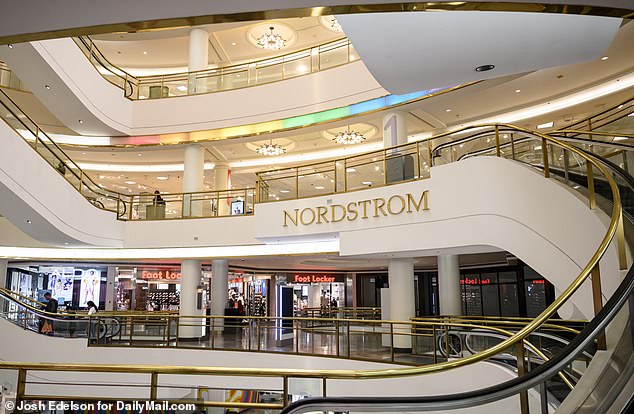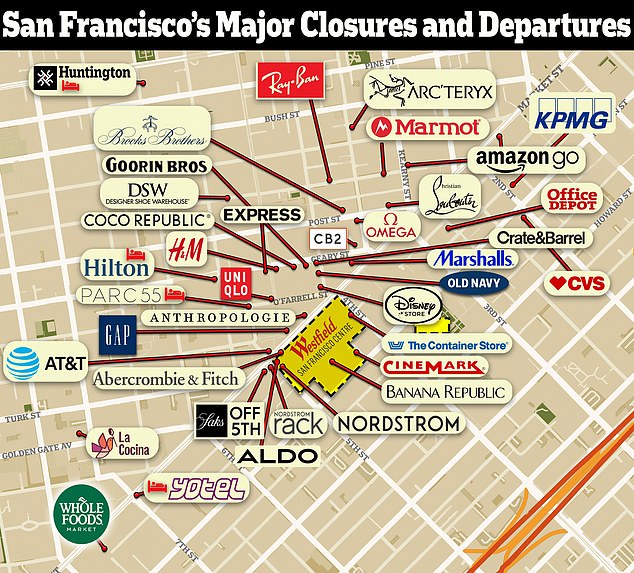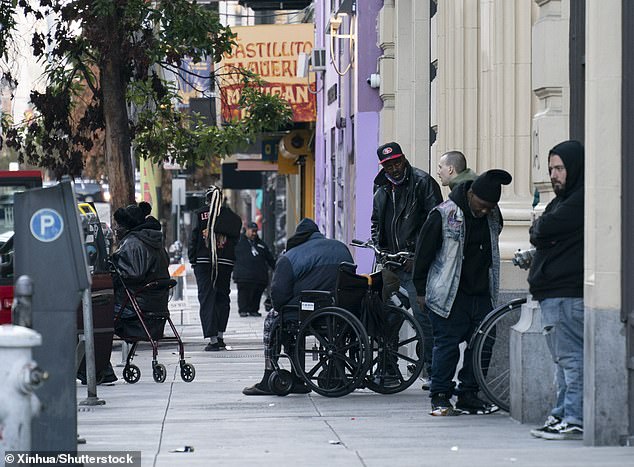KPMG moving out of $400million ‘KMPG building’ in downtown San Francisco with nearby besieged mall loses another tenant as doom loop continues to see residents and businesses flee liberal-led city
Accounting firm KPMG is set to move out of its $400 million building of the same name, another high-profile exit from San Francisco’s beleaguered downtown.
The consulting and accounting giant first leased space in the 25-story office tower when the building opened in 2002. The name hangs above the entrance to the skyscraper where the company currently occupies more than 100,000 square meters.
It comes as shoe store Alto prepares to leave San Francisco Center, the city’s largest mall, next week.
Businesses and residents have fled downtown San Francisco since the pandemic, with groups blaming crime, homelessness and working from home keeping people away from downtown.
Nearly 100 retailers in downtown San Francisco have closed since the pandemic began, a drop of more than 50 percent, according to a recent report.
KPMG is set to leave its namesake $400 million building in downtown San Francisco after 20 years

Nordstrom recently moved out of the city center, which has contributed to a loss of foot traffic
KMPG, a major accounting and financial firm, originally took 90,000 square feet at 55 Second St. in a 10-year lease, marking the second-largest office deal of 2003.
Since then, its footprint has grown to nearly a third of the 380,000-square-foot building, making it commonly known as “The KPMG Building.”
The company is now considering ending its twenty-year relationship with the building. according to the San Francisco Chronicle. It is the latest tenant to leave the city center.
Now another company is about to leave the region’s largest mall as Aldo moves its store from the San Francisco Center. The mall lost Adidas last Saturday, as well as other recent losses including Hollister, Lego and J. Crew.
The mall lost $910 million between 2016 and 2023, while half of its rental space is now vacant, according to an appraisal released last month.
The owners lost control of the 5 million-square-foot retail and office complex to lenders last year.
The high-profile closures and exits suggest that San Francisco’s “doom loop” is far from over. A doom run occurs when a city loses its tax base and cannot afford improvements needed to remedy the situation and bring new businesses and residents back to an area.
The city center has suffered from the proliferation of homeless camps, open-air drug markets and rampant theft.
Hordes of brand names, including Whole Food and Nordstrom, that have recently moved have contributed to a loss of foot traffic that is then driving away other businesses.
The city has also struggled with rampant fentanyl use and fatal overdoses for years.

Nearly 100 retailers in downtown San Francisco have closed since the start of the COVID pandemic, a drop of more than 50 percent, according to a recent report

The city center has suffered from the proliferation of homeless camps, open-air drug markets and rampant theft

The city has also struggled with rampant fentanyl use and fatal overdoses for years
Preliminary reports show that there were 346 overdose deaths in the city in the first five months of 2023 – an increase of more than 40 percent from the same period in 2022.
Economists have warned that the city is entering an ‘urban doom loop’: a vicious circle of interconnected trends and forces that are plunging cities into economic and social ruin.
Large-scale theft has proven to be a problem in the area recently, with a Walgreens in the city center deciding to link their freezers together to deter shoplifters.
Retail stalwart Old Navy announced last month that they would be closing their flagship store in the area.
Anthropologie and Office Depot have made the same decisions.
These stores joined the growing list of stores that have left the coastal city, including H&M, Marshall’s, Gap and Banana Republic.
A troubling recent report found that 95 retailers in downtown San Francisco have closed their doors since the start of the COVID pandemic, a drop of more than 50 percent.
Of the 203 retailers that opened in the city’s Union Square area in 2019, only 107 are still operating, a 47 percent drop in just a few pandemic-affected years.
